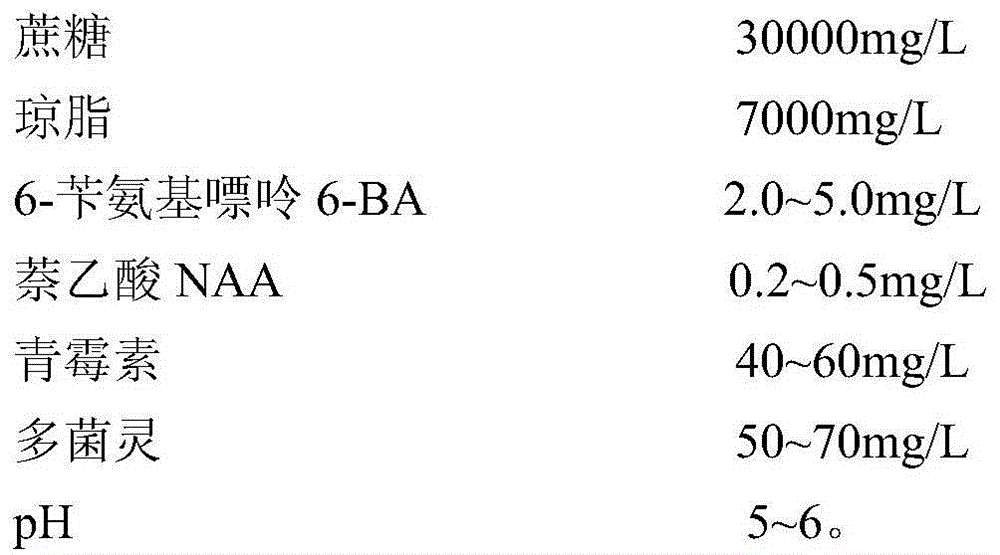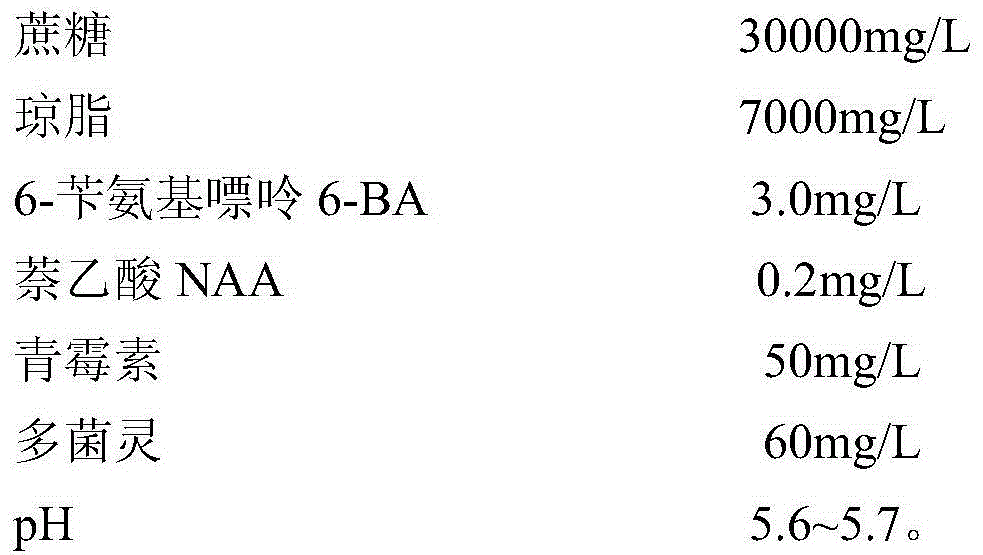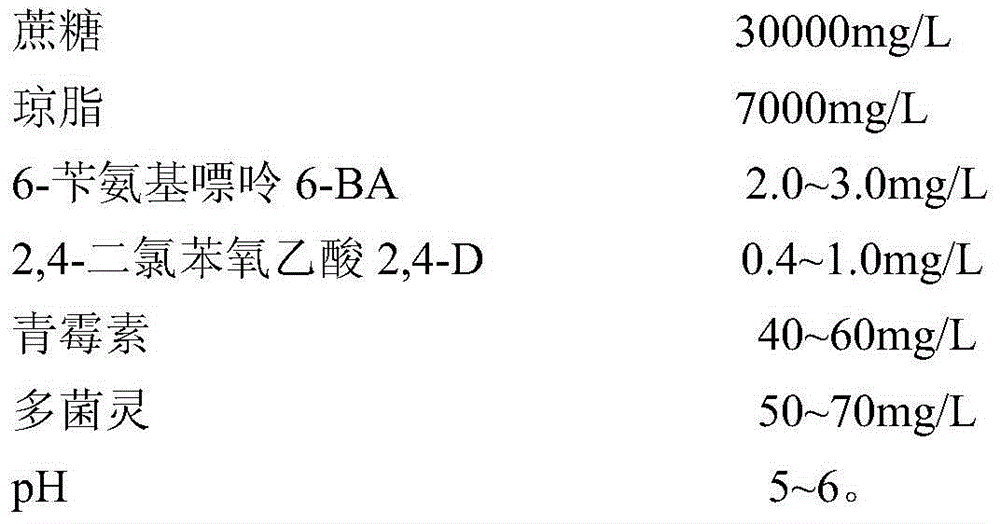Method for multiplying vetiver grass seedlings from stem auxiliary buds
A technology of vetiver and axillary buds, which is applied in the field of propagating vetiver seedlings by using stem nodes and axillary buds, and can solve the problems of chlorosis death, callus cell induction difficulty, and unexplained axillary buds, etc.
- Summary
- Abstract
- Description
- Claims
- Application Information
AI Technical Summary
Problems solved by technology
Method used
Image
Examples
Embodiment 1
[0068] Embodiment 1 Vetiver aseptic axillary bud growth medium
[0069] The media formulation includes:
[0070] 1 x MS nutritional elements
[0071]
Embodiment 2
[0072] Embodiment 2 Vetiver aseptic axillary bud growth medium
[0073] The media formulation includes:
[0074] 1 x MS nutritional elements
[0075]
[0076]
Embodiment 3
[0077] Embodiment 3 vetiver aseptic axillary bud growth medium
[0078] The media formulation includes:
[0079] 1 x MS nutritional elements
[0080]
PUM
 Login to View More
Login to View More Abstract
Description
Claims
Application Information
 Login to View More
Login to View More - R&D
- Intellectual Property
- Life Sciences
- Materials
- Tech Scout
- Unparalleled Data Quality
- Higher Quality Content
- 60% Fewer Hallucinations
Browse by: Latest US Patents, China's latest patents, Technical Efficacy Thesaurus, Application Domain, Technology Topic, Popular Technical Reports.
© 2025 PatSnap. All rights reserved.Legal|Privacy policy|Modern Slavery Act Transparency Statement|Sitemap|About US| Contact US: help@patsnap.com



